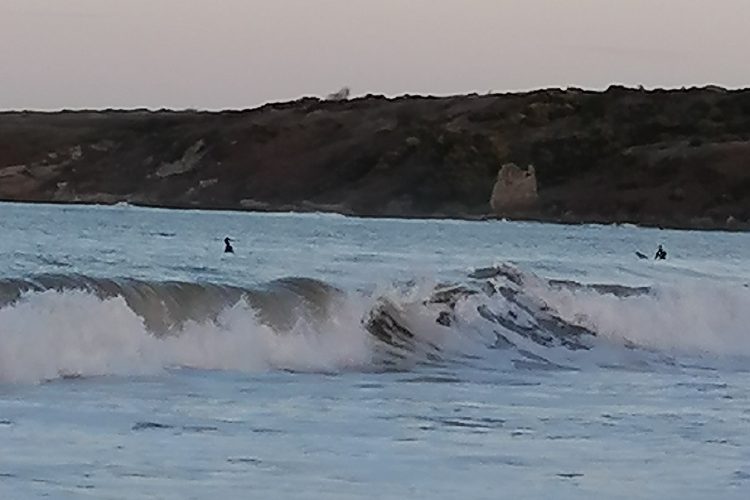We often assume that sea bathing is a healthy pastime. What’s not to like about a bracing dip in the North Sea on a fine summers day? Even out of season, hardy souls are occasionally seen braving the freezing waters in St Andrews East Sands and students see it as a rite of passage to welcome the dawn with a group swim on the first of May.
However, all is not as innocent as might be imagined. Hidden dangers face swimmers all round the coast of Britain. In Scotland the risk is not from white sharks or salt water crocodiles, as it might be in Australia, but something much more insidious. Hidden viruses and bacteria abound in the sea around our coast, and are more numerous in the sea near centres of population.
A new health survey by the University of Exeter has shown that sea bathers are three times more likely to report infections than those who stay safely on land. Not in this case, from Covid -19, but issues such as ear infections and diarrhoea. Sea bathers are four times likely to visit their GP with skin infections than those who don’t dip in the briny.
Where do these infections come from? The greatest source of infection is from untreated sewage and wastewater which discharges from treatment works overflows especially during heavy rain. Rain can also cause outflows to occur from septic tanks, road, urban and agricultural run-offs.
The Surfers against Sewage website https://www.sas.org.uk/map/ has daily updated report on sea quality around Britain and you can also download a smart phone app which will alert you to up to date reports for hundreds of beaches across the country as well as report illnesses when you have become sick after sea bathing. The app includes daily pollution risk forecasts made by the Environment Agency, NRW and SEPA for 200 locations across the UK. so surfers, swimmers and other beach users can avoid potentially harmful pollution locations.
In St Andrews, electronic notice boards have been installed at the East Sands providing daily updates on water quality. What the criteria is for alerts is not entirely clear, but water authorities are responsible for reporting major pollution events.
The Surfers against Sewage website report for St Andrews on 15th June states that water quality data is not available“out of season” It goes on to say:
“Daily Pollution Forecasts for Scottish beaches are issued at 10 am. West Sands is a 1.8 km long sandy beach is backed by sand dunes which form the boundary with the St Andrews Links Jubilee golf course. The area is popular for walking, running and swimming. Pollution risks include agricultural run-off and combined sewer overflow.
East Sands is a sandy bay approximately 700 m long and popular with tourists and watersports enthusiasts. Kinness Burn flows into the sea immediately to the north of the bathing water. Pollution risks include agricultural run-off and combined sewer overflows. “
Magic Seaweed adds on its website “Suss water quality when golf crowd in town due to overburdened sewage system.”
Dinghy sailors off the East sands have reported seriously polluted water from time to time, and although, generally, water pollution is improving, mainly to meet EU standards, risks are clearly not eliminated and more action is needed in St Andrews.
The exponential rate of development in St Andrews puts more pressure on water treatment facilities. Scottish Water has indicated that it can’t reliably provide the service that is needed to service the proposed level of expansion. This is an issue requiring political attention and an increase in resources if water quality is to be improved to meet acceptable standards.
From a special correspondent
Picture: Surfers off the East Sands St Andrews; not subject to copyright
